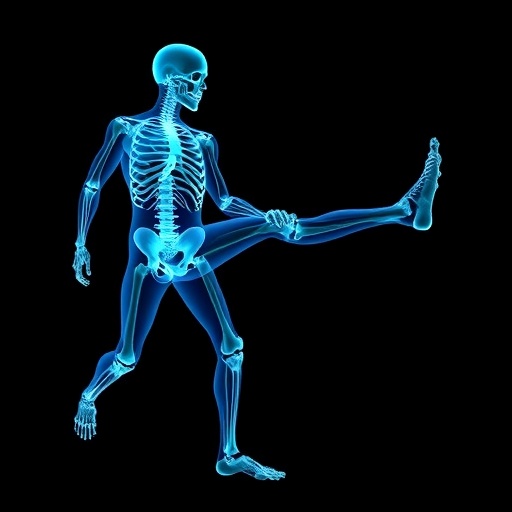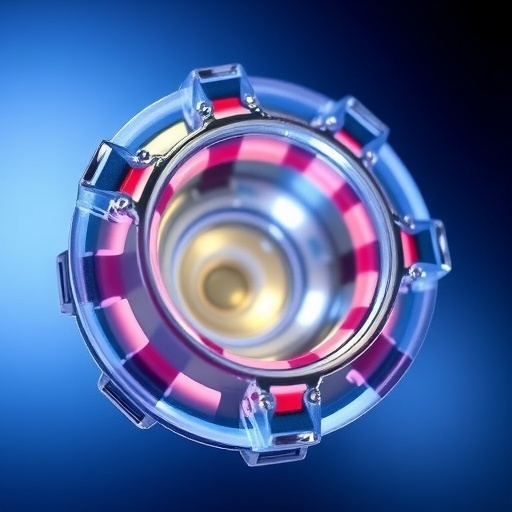
In a groundbreaking study that redefines approaches to weaning patients off extracorporeal membrane oxygenation (ECMO), researchers have explored the synergistic role of neurally adjusted ventilatory assist (NAVA). This innovative technique appears to provide a more effective and humane way to facilitate the transition of critically ill patients from mechanical ventilation support. The findings from this research are pivotal, particularly for patients who have spent extended periods on ECMO, and represent a new horizon in critical care.
The core idea behind NAVA is its ability to adapt ventilatory support based on the patient’s own neural respiratory drive. This unique method harnesses the patient’s intrinsic signals to regulate the assist provided by the ventilator, allowing for a personalized approach to mechanical support. Unlike traditional modes of ventilation, which can sometimes overshoot or undershoot a patient’s requirements, NAVA promises a more intuitive way to manage respiratory function, mitigating the risks associated with mechanical ventilation.
ECMO serves as a vital lifeline for patients suffering from severe respiratory or cardiac failure, providing oxygenation and circulation support when traditional methods fail. However, once a patient’s condition begins to improve, transitioning away from ECMO support becomes a delicate dance. The challenge lies in ensuring that patients do not suffer from withdrawal symptoms caused by abrupt cessation of ECMO support. This is where the integration of NAVA presents a significant advancement—enabling a more gradual and patient-centered approach to weaning off ECMO.
The study presented by Heinold et al. brings together compelling evidence highlighting the effectiveness of this technique. The researchers conducted a comprehensive analysis of a series of cases involving patients who were successfully weaned off ECMO using NAVA. The outcomes were striking: not only did the patients exhibit reduced levels of discomfort and anxiety during the weaning process, but they also experienced improved overall recovery trajectories. This suggests a dual benefit: enhancing both patient comfort and clinical outcomes.
Furthermore, NAVA distinguishes itself from other assist modes by closely aligning with a patient’s respiratory patterns. Traditional mechanical ventilation systems often compare poorly in this aspect, as they rely on preset parameters that may not effectively reflect a patient’s needs. Consequently, NAVA not only enhances patient oxygenation but also actively engages the respiratory muscles, reduces potential bullying from mechanical assist, and promotes natural breathing methods.
One fascinating aspect of this research is the realization that the neural control of breathing can be significantly harnessed to optimize mechanical ventilation. Understanding the respiratory drive can inform clinicians about when patients are ready for weaning, hence, it minimizes the risks involved in premature removal from ECMO. This revelation may ultimately change how critical care practitioners perceive and apply ventilatory management strategies, leading to broader applicability in diverse patient populations.
Moreover, this study sheds light on the functional implications for bedside monitoring. With NAVA, clinicians are equipped with a real-time, responsive system that adapts to a patient’s changing needs and can signal the optimal timing for transitioning off ECMO. Such a strategic shift in monitoring practices not only streamlines patient care but fosters a holistic approach that values patient experiences alongside clinical efficiency.
The potential for wider adoption of NAVA is significant. Hospitals worldwide are increasingly recognizing the importance of personalized medicine, and incorporating such adaptive technologies into routine practice can advance the standard of care for critically ill patients. This can lead to decreased lengths of hospital stays and improved outcomes, ultimately translating into better resource utilization within the healthcare system.
Interestingly, the psychological dimensions of weaning off mechanical support should not be overlooked. Patients often experience anxiety, fear, and distress during the adjustment phase, and NAVA can play a crucial role in alleviating some of these adverse effects. By allowing patients to engage in their breathing more organically, it fosters a sense of agency, aiming toward a smoother psychological transition back to independent respiration.
As hospitals look to integrate these findings into existing clinical protocols, continued education and training for healthcare professionals will be paramount. Understanding the nuances of using NAVA effectively will help ensure that patients receive the maximum benefit from this technology. As the authors highlight, tailored training programs can equip nurses and respiratory therapists with the tools necessary to leverage this innovative ventilation method efficiently.
In conclusion, the findings from Heinold et al. highlight a transformational approach in ECMO weaning, emphasizing the use of neurally adjusted ventilatory assist for facilitating improved patient outcomes. As further research and clinical trials unfold, the ultimate goal is to refine this approach and establish it as the gold standard in managing critically ill patients requiring mechanical respiratory support. The road ahead is promising, revealing a future where ECMO weaning can be a more comfortable, responsive, and effective process.
As this field of study evolves, it will undoubtedly fuel ongoing discussions and inspire innovative approaches in critical care. The balance of optimizing physiological support while ensuring patient comfort is a delicate one, and advancements like those presented in this study pave the way for achieving this goal more effectively.
Continued exploration into the implications of NAVA on long-term respiratory health, recovery rates, and the overall quality of patient care presents an exciting avenue for future research. With every step forward, there lies an opportunity not just to save lives, but to enhance the experiences of patients navigating the challenges of critical illness.
By delving into the convergence of technology and patient-centered care, researchers and clinicians alike are pushing the boundaries of what is possible in the realm of respiratory support. The future of ECMO weaning looks brighter than ever, thanks to innovative strategies that prioritize both clinical efficacy and patient dignity.
Subject of Research: ECMO-weaning strategies using neurally adjusted ventilatory assist (NAVA)
Article Title: ECMO-weaning facilitated by neurally adjusted ventilatory assist (NAVA): a case for principal clarification.
Article References:
Heinold, F., Moerer, O. & Harnisch, L.O. ECMO-weaning facilitated by neurally adjusted ventilatory assist (NAVA): a case for principal clarification.
J Artif Organs 28, 462–467 (2025). https://doi.org/10.1007/s10047-024-01484-6
Image Credits: AI Generated
DOI: https://doi.org/10.1007/s10047-024-01484-6
Keywords: ECMO, NAVA, mechanical ventilation, respiratory drive, patient-centered care, critical care, weaning strategies.
Tags: critical care advancementsECMO patient recovery processECMO weaning strategiesinnovative approaches to ECMOmanaging respiratory functionmechanical ventilation supportNAVA in critical careneurally adjusted ventilatory assistpatient-centered ventilation techniquespersonalized respiratory supportrisks of mechanical ventilationtransitioning off ECMO




